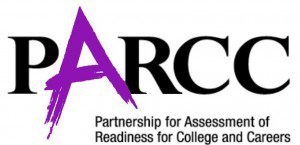
MANCHESTER – Manchester Schools carved some time out of a recent Board of Education meeting to look at data from the most recent PARCC test administration, the district’s third, and make sense of what that data means for its students.
PARCC, which stands for Partnership for Assessment of Readiness for College and Careers, is an annual year-end test covering English and Mathematics for students in grades 3-8 and high school. Originally created to align with the more rigorous academic standards adopted by most states in 2010 and 2011, such as common core, New Jersey is only one of eight states that still participates in PARCC testing.
Director of Curriculum Diane Pedroza made the presentation to board members and parents, explaining that students scoring 4s and 5s on the test are seen as “college and career ready,” those scoring 3s have approached expectations and are “almost there,” and students scoring 2s and 1s have not fully met expectations.
In data charts, Manchester Schools were compared to a state average, as well as an average for participating PARCC states.
When it came to English, students in grades 3-8 overall did very well. For example, 50 percent of 3rd grade students scored 4s and 5s, which was the same percentage as the state, and 10 percent higher than PARCC states.
What was more interesting than just looking at the data from this year’s testing, though, was being able to see how the same students progressed year to year. Looking at the 4 and 5 scoring incoming 5th graders, Pedroza said, “In 2016 we were at 38 percent – in 2017 those same kids moved to 51 percent. I think that’s just remarkable.”
Quantifying testing data from the high school was a bit trickier, said Pedroza, because of the new block scheduling this past year.
 “I really have to commend my department. This was not an easy task, taking the fall block and taking the spring block. (Test manufacturer) Pearson does not do this, we have to do this, and we wanted to make sure we could do this to give you an accurate picture,” she said.
“I really have to commend my department. This was not an easy task, taking the fall block and taking the spring block. (Test manufacturer) Pearson does not do this, we have to do this, and we wanted to make sure we could do this to give you an accurate picture,” she said.
Again, looking back to the previous year, Pedroza was able to determine that PARCC scores in 11th grade English went up from 19 to 20 percent from the 2016 school year to the 2017 school year.
“For me that’s optimistic, we’re moving in the right direction.”
Math scores painted a slightly different picture.
“As a whole mathematics scores I believe have been on a decrease and there’s only one grade in particular, which I believe is third grade, that 50 percent of the students in the state of NJ met proficiency, which is 4s and 5s,” said Pedroza.
School officials cited a number of reasons that could account for the slide in math scores, especially in New Jersey, such as changes to the state learning standards, questions on the assessment, and gaps left from Governor Chris Christie dropping common core. Last year the state reconfigured the New Jersey Student Learning Standards and frameworks, allowing teachers to change and restructure their curriculum this year, hopefully filling in those gaps.

“The other thing that’s very helpful are the evidence statements that go along with the data that we have. They really isolate mathematical practices and reasoning, so that data becomes really important for us to use with our teachers because we can really isolate and say – where do we need to fill in the gap?”
For the most part, students in grades 3-8 scored more 4s and 5s on the math test than participating PARCC states did, but came out lower than the state average. The most noticeable data was the absence of any 5s in 8th grade math, which does not include students taking Algebra 1 Honors while in middle school. Superintendent David Trethaway commented that the students who would have scored 5s are probably taking Algebra 1 Honors, a sign that the district is placing its honors students very well.
Percentages of students scoring 4s and 5s were lower for Algebra 1, Geometry and Algebra 2, but Pedroza was able to draw patterns from last year’s testing data and show that the numbers are at least rising. For example, the percentage of 4s and 5s for Algebra 1 in 2016 was 20 percent, but jumped to 26 percent in 2017. The same was true for Geometry, which moved up from 6 to 12 percent.







